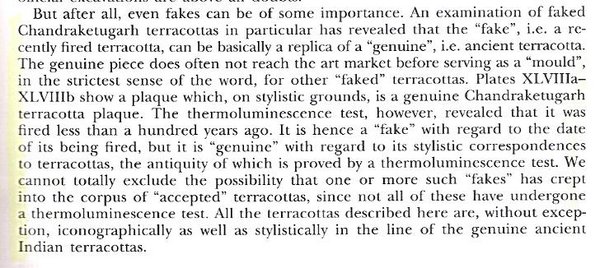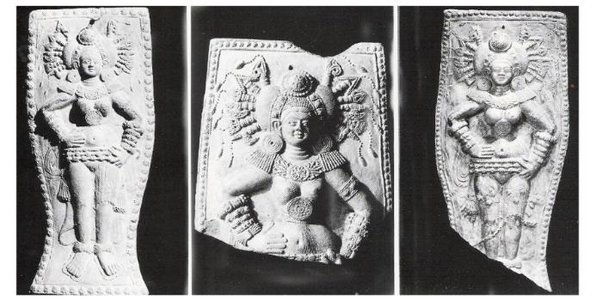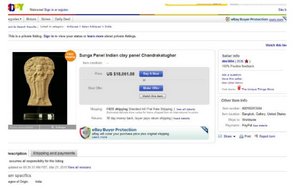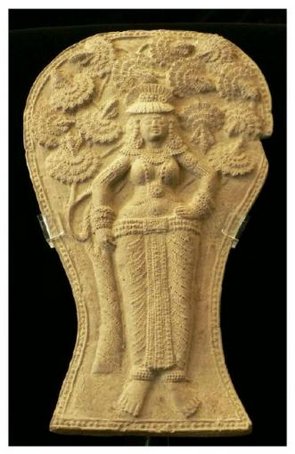
|
|

|
YOU ARE HERE:>>REAL or FAKE>>Fake Indian terracottas.
You really do need to see ![]() here first>>>>
here first>>>>
From the interview with Prof. Joachim Karl Bautze much of which is shown in that section.
AG: What about the so-called Chandraketugarh Fakes?
JKB: I will tell you a story – it's about the plate #48 of my book. The photo was sent to me by a museum in Oxford (UK) asking my opinion. The plaque is about a lady ...(see the photo) -- it looked absolutely OK. So I reported that in my opinion it looked right. Then it was tested (thermo-luminescence) and was found that the clay was fired only 20 years ago. I was flabbergasted -- thought it was amazing that they were able to build such fine pieces in modern times. This meant that we could trust items only from old collections -- from 20-30 years ago -- when there wasn't any demand for Chandraketugarh pieces. I titled this piece in the book as a "master fake".
Subsequently a dealer called me from London and said that the piece wasn't fake and that his tests showed that it was found to be original. The investigation revealed that two fragments from two different pieces -- one new and one old -- were confounded in the laboratory.
We have to consider the following scenario: suppose that a bronze piece can be sold for $100K. How much does it cost to convince a person ("expert") in a laboratory that the piece is old? Suppose that the piece costs $5K, you add another $10K to get a seal of approval. The stakes are so high that this will be perfectly all right. I must say that the skills of modern Indian craftsmen are remarkable in making fakes.
I have seen actual fakes on display in museums, although I don't want to mention names. But then again, these are perhaps mixtures of genuine and authentic stuff. If the craftsmen are caught they should not be sent to jail but they should be rewarded, because the pieces are so good (joking).
I think most of the fakes are produced for the American market. They also know the market well. Therefore they avoid the hard-core erotic pieces. Not only Chandraketugarh terracottas are faked but also Kushana sculptures.
.
In his book,
EARLY INDIAN TERRACOTTAS ICONOGRAPHY OF RELIGIONS XIII, 17 (Leiden, 1995)
he also wrote, interestingly:

.
Which is genuine?
In order to even start trying to answer this question one needs to know that large Chandraketugarh terracottas often appear in near duplicate.
Not exact duplicate, but very much the same bar small details.
From the study of both the terracottas themselves and the moulds that have been found it is now known that an original die was used to make several moulds. However the moulds were then slightly changed by adding small details. Small holes made would appear on the final terracotta as raised dots and incised lines would appear as such as folds in the clothing.
Here are some examples as shown on three individual teracottas above; all from different moulds derived from the same master die.
.
Again here with these three there are small differences.


.
As it so happens all three are genuine.
What about this piece which appeared on eBay?


.
Enough to persuade one to pass on that terracotta I think!


Home | About This Site | Privacy Statement | Gallery | Testimonials | Guarantees
About Collectors' Resources pages | What's New
Search | Site Map | Contact Us
